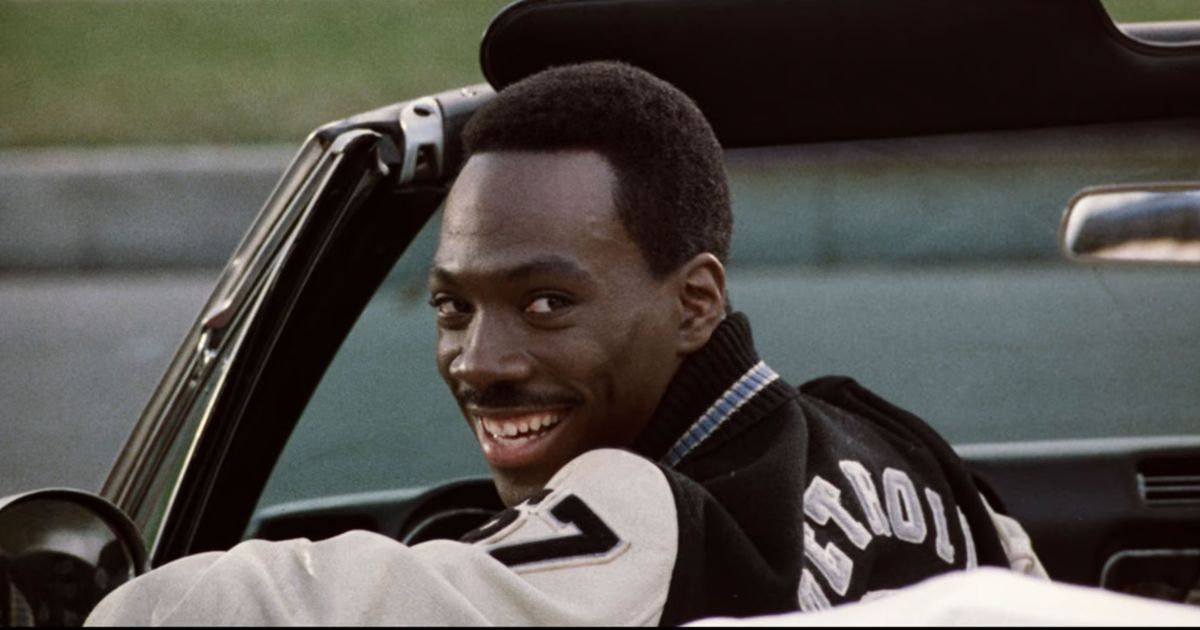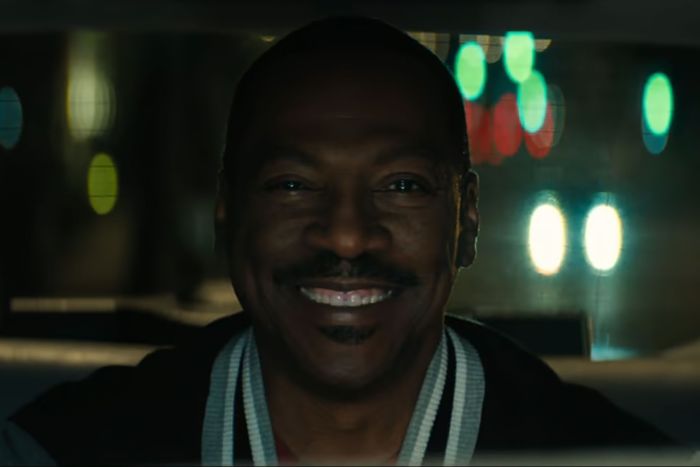Considering the bottomless trough of legacy-sequel slop that Hollywood has so reliably provided us with over the last decade, it came as a pleasant surprise that the long-gestating Beverly Hills Cop: Axel F turned out to be a pretty slickly made summer movie — one that mostly knows when to tweak the formula and when to coast on pure nostalgia. Sure, it assaults you right off the bat with a barrage of shameless callbacks, including a needle drop of “The Heat Is On” (a banger, to be clear), and it has the occasional clunky meta joke about the franchise. (“And then ’94 … not your finest hour,” Joseph Gordon-Levitt’s character says, referring to the maligned third film.) But for the most part, the nostalgia bait works — it’s still fun to see Axel Foley improvise characters on the fly to talk his way into rooms he shouldn’t be in, and Eddie Murphy’s mile-wide grin lights up the screen even when it’s detached from the honking laugh that you ungrateful losers mocked him for in the ’80s. To its credit, the movie also at least tries to engage with the modern era, taking a more critical view of police by making its villain (Kevin Bacon) a crooked cop who wishes the public didn’t care so much about “what we say and what we do.” Despite those updates, though, Axel F sticks to the franchise’s blueprint where it matters most, using its final moments to employ one of the most thrilling cinematic tropes of the ’80s, and one that I would argue is due for a comeback: the freeze-frame ending.
Of course, the ’80s can’t lay a complete claim to the freeze-frame. Long before Axel Foley ever journeyed to Beverly Hills, Alfred Hitchcock helped popularize freeze-frames by using one as a scene transition in his 1928 comedy Champagne. The freeze-frame ending, specifically, also significantly predates Foley — pour one out for poor Antoine Doinel, for example, who finally achieves his dream of seeing the ocean at the end of François Truffaut’s The 400 Blows (1959) only to be trapped in that moment forever, the word FIN superimposed on his image like the bars of a prison cell. Ten years later, the French New Wave–indebted Butch Cassidy and the Sundance Kid famously left its titular anti-heroes frozen in the moment just before their deaths, preserving them as outlaw legends who went out in a blaze of glory rather than two bullet-riddled corpses. Throughout the ’70s, Hollywood films continued to prove the versatility of the freeze-frame ending. Sydney Pollack’s paranoid thriller Three Days of the Condor (1975), for instance, uses a freeze-frame to inject some ambiguity into what otherwise might be interpreted as an optimistic ending, while The Taking of Pelham One Two Three (1974) basically uses Walter Matthau’s hangdog face as a punch line, his knowing expression telling you everything you need to know about what happens next.
Despite its long history, the freeze-frame ending is gloriously, inextricably linked in the annals of pop culture with the glossiness of ’80s blockbusters. One could argue that makes it an aesthetic extension of the decade’s particular brand of cultural rot — the Wall Street excess, the bland patriotism, the shameless consumerism. The Rocky movies feel explicitly designed to illustrate that point. The triumphant freeze-frame at the end of the original Rocky (1976) might’ve been an uplifting corrective to the often cynical dénouements of ’70s movies, but by Rocky IV (1985), the once-relatable underdog had gone full superhero, with the final freeze-frame capturing a ’roided-out Rocky literally wrapped in an American flag. Elsewhere, ’80s filmmakers found more nuanced uses of the freeze-frame ending, with John Hughes employing it in a variety of ways across his filmography. While John Bender’s fist in the air might capture the character’s defiant sense of triumph in The Breakfast Club, the parting close-up of John Candy’s half-smile in Planes, Trains & Automobiles communicates genuine happiness with an ocean of pain lurking just beneath it. Each of those freeze-frames imprints a lasting image on your brain that later, when thinking back on it, can act as a sort of mental shortcut to a whole movie’s worth of emotions.
The final shot in Beverly Hills Cop: Axel F.
Photo: Paramount
Sometimes, though, that mental shortcut just brings you back to thinking, Fuck yeah, Axel Foley is awesome. The first two Beverly Hills Cop movies end with Axel saying something quippy to his partners, Rosewood (Judge Reinhold) and Taggart (John Ashton), before driving off while looking back toward the camera as one of the franchise’s various bops kicks in on the soundtrack and the credits roll. It’s a trick that never gets old (even when the third film puts its own spin on it) and that leaves you pumping your fist while wondering, What’s that crazy guy gonna get up to next?, which is probably about the best exit survey a money-grubbing movie studio could hope for. Axel F tweaks the formula slightly so that a freshly wounded Axel is in the car with Rosewood and Taggart, coaxing them back into one more case while they grumble about being too old for this shit. He wins them over, obviously, and we get a freeze-frame of Axel grinning in the backseat as the series’ iconic synth score plays. We’re so back, etc.
The takeaway from all this, obviously, is that if Hollywood insists on serving up more of that nostalgia-bait slop, they could at least have the decency to throw in some outdated stylistic callbacks, the freeze-frame ending chief among them. Come to think of it, why limit this to legacy sequels? Dune: Messiah has to end somehow.


